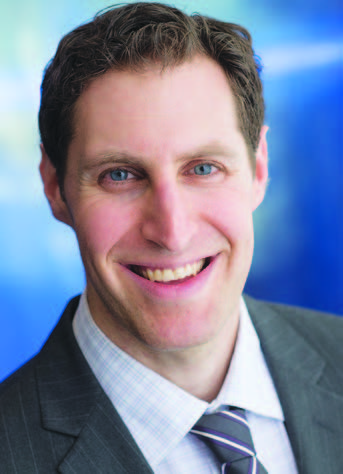An endangered species: How to save ourselves
 |
| Dr Eric Cadesky |
The North Atlantic right whale. The spotted turtle. The community-based doctor. These are all species at risk.
The signs are clear: long wait lists;[1] offices that move or close;[2] retiring doctors who can’t find replacements[3] and orphan their patients; fewer doctors choosing community-based practice, especially those with longitudinal relationships; burnout, incivility, and suicide.
Health care is always dynamic, but it feels like change—and the pressures it brings—is accelerating exponentially. The cost of living and doing business in British Columbia is increasing as both personal and commercial rents are rising faster than the medical payment schedule. While we advocate for networks that allow improved patient access to doctors who know them, relationships are already fragmented by in-person and virtual episodic-care clinics. Executive physicals, wellness spas, and alternative providers further stress our system in the cases of inappropriate investigation, diagnosis, and treatment. All of this leads to the cycle of increased demands for services and more complex visits for doctors.
We have seen new graduates reject traditional styles of practice while longing for a system that supports them to practise the high-quality relationship-based care they were trained for and desire. We can hardly blame our colleagues who choose positions with fewer administrative burdens—don’t we all dream of a future free from interminable forms, faxes, and phones?
What we need is a new model that allows doctors, and, for that matter, all health care professionals, to practise to their scope and spend more time with patients. I won’t pretend to have the answers for how to reinvigorate community-based care that allows doctors to practise the way we were trained, but here are some principles that I believe could help our species.
New food sources
Traditionally the fee-for-service system has been based on swings and roundabouts: straightforward visits balanced by longer, more complex ones. But with competition for lower complexity services, this survival model no longer holds. Rather than dig in our heels, we should cede this territory and embrace the potential of artificial intelligence, while letting nurse practitioners and physician assistants practise to their scope. This, of course, requires a new way of funding doctors to focus on the valuable types of care that only we can provide. Such an ecosystem would be more harmonious and would allow us to make the best use of our skills. It would likely involve team-based care and may not fit nicely in the fee-for-service box, although we should remain agnostic about the particular funding model while work on this continues.
Sustainable habitat
Doctors have traditionally taken on the burden for a large part of health care infrastructure, paying for workspace, supplies, staffing, insurance, and other costs. As collaborative practices become more prevalent, we need to look at separating the funding for care from the funding for infrastructure. As always, this should be a choice: some doctors with an entrepreneurial spirit may want to remain involved in day-to-day operations and enjoy the associated business autonomy. Others may want to focus on clinical care and perhaps work part-time in multiple settings that provide rewarding and varied opportunities. Again, we should not advocate for a particular option but rather for doctors to have the autonomy to decide how they balance clinical and administrative duties.
Flock together
We have seen elsewhere what happens when the interests of small groups are put above those of the entire species. While there may be times when we do not get what we feel we deserve on a particular issue, letting smaller disputes erode our overall relationships with each other weakens us as a profession. Our brains are wired to attend to changing stimuli, so we must work hard and not lose sight of the fact that we have much more in common than not. No matter where we practise, what we practise, or our stage of practice, we all work together to care for our patients, our communities, and each other.
We are as strong as we are united. Tribalism and identity politics within our profession are the fastest paths to extinction. Rather, let us come together as a mosaic and encourage diverse thoughts so that we can hear all ideas and respect each other’s unique views in the context of a whole profession. We are at a tipping point with the viability of community medicine in peril. As we stand together in a changing climate there may be some projects we can quickly act on. The divisions of family practice and medical staff associations are acting locally, along with pilot projects through the Joint Collaborative Committees. And while negotiations on the next Physician Master Agreement will address these issues, such change will not be quick.
As an organization, Doctors of BC is working hard to achieve a more positive future. In return for your trust, there is accountability. I personally promise to continue to inform you whenever there is an agreement or announcement that affects you. This also means that between announcements there will be periods of relative silence; please do not mistake these for inactivity.
These are some of my thoughts, and I encourage you to share yours with me. No one person has the answers, but by listening to each other and working better together I am confident we will find the solutions to save our species.
—Eric Cadesky, MDCM, CCFP, FCFP
Doctors of BC President
References
1. Fraser Institute. Waiting your turn: Wait times for health care in Canada, 2017 report. Accessed 13 December 2018. www.fraserinstitute.org/studies/waiting-your-turn-wait-times-for-health-care-in-canada-2017.
2. Whistler Question. Northlands Medical Clinic to close in September. Accessed 13 December 2018. www.whistlerquestion.com/news/local-news/northlands-medical-clinic-to-close-in-september-1.21879613.
3. Times Colonist. Saanich family doctor can’t give away his practice. Accessed 13 December 2018. www.timescolonist.com/news/local/saanich-family-doctor-can-t-give-away-his-practice-1.1396057.


Excellent metaphor, great points.